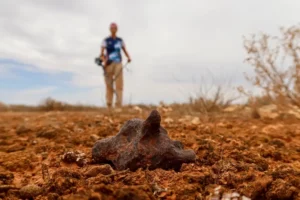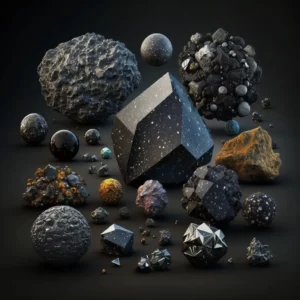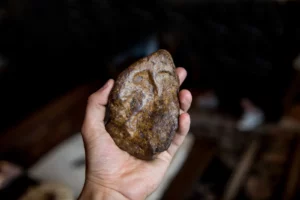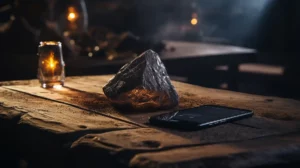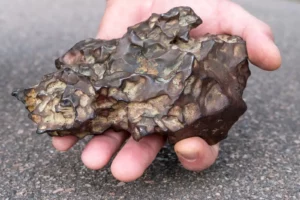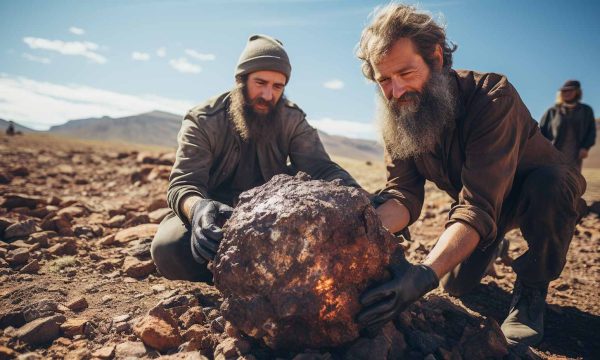
From Sky to Pocket: The Adventurous World of Meteorite Hunters
Last Updated: November 9, 2023
Many of us are reigniting our dream archaeologist job with Indiana Jones back in the theaters, but there are other real “relic hunters” searching for vestiges of a much older past, 4.5 billion years old.
Meteorite hunters race across the country and the globe to locations with recent fireballs that could have dropped meteorites on the ground, worth thousands, even millions of dollars, and containing a story that few can tell.
Introduction
Very briefly, bits of space rock from the early formation of the solar system sometimes impact our atmosphere, releasing a bright streak across the night sky that we call a “shooting star” or a meteor. If there are multiple of them, and particularly if they are an annual event from Earth’s orbit crossing into a debris field, they are called meteor showers. Most of these meteors, which are actually no bigger than a grain of sand, burn up in the atmosphere, but a few of them (some estimates say only 1%) make landfall, becoming a meteorite. These relics of our ancient past hold answers to questions about the solar system and life in general.
As with anything, rarity can also mean a high price tag and despite the fact that many reports end up being much more terrestrial in nature (such as the recent viral story of a French woman who was impacted by a rock while having coffee on her terrace on July 6, 2023), the real deal can snag a hefty price tag, with of course bigger specimens costing more. It is typically legal to sell meteorites, but there are often rules for each country on the specifics, such as that the owner of the land the meteorite falls on has ownership of the meteorite as well.
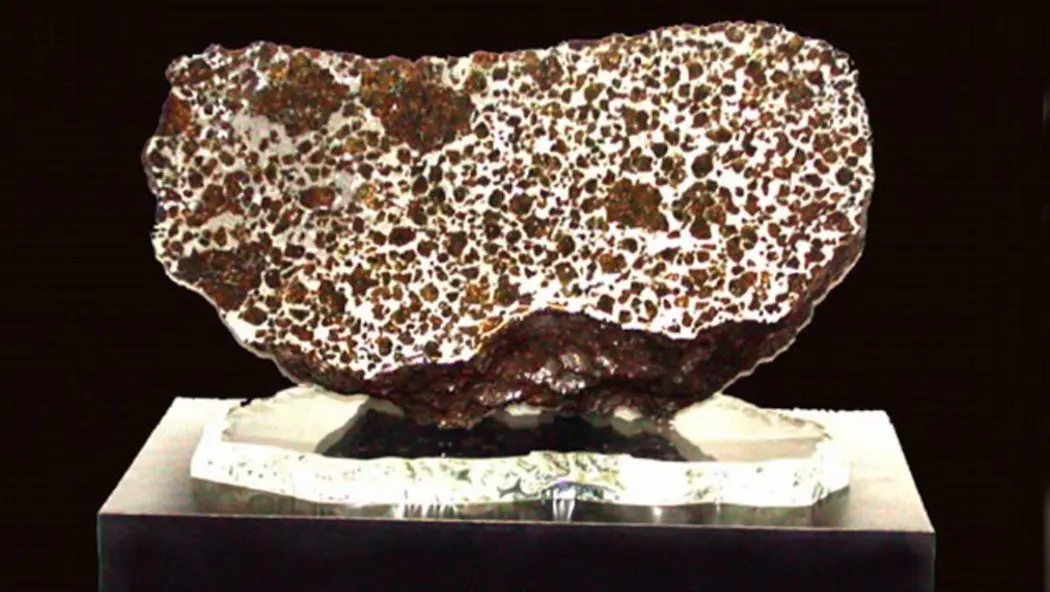
Background of meteorite hunting
Despite the fact that “space rocks” or meteorites have been found to have places of honor and respect in ancient cultures around the world, it wasn’t until 1794 that German physicist Ernst Chladni proposed these fascinating rocks came from outer space and fell to Earth in the fiery flashes that have been seen as omens (like eclipses) since ancient times.
It took a decade before this proposal was proven to be correct. On April 26, 1803, hundreds of rocks rained down on the French market town of L’Aigle. Physicist Jean-Baptiste Biot investigated the meteors and, after interviews and mineral analysis, confirmed the rocks were, indeed, not of this world, calling the event “one of the most astonishing phenomena that men have ever observed” in his report for the Académie Française.
A few people began collecting them as curiosities, but a century later, the first meteorite hunters were born. Harvey H. Nininger, a biology professor in Kansas, read a meteorite article from The Scientific Monthly in August 1923 and decided to give up his University position for a Model T and the chance to travel the world hunting meteorites with his wife Addie.
In the 1930s, dry-goods broker Oscar E. Monnig began his collection which is now on display at Texas Christian University in Fort Worth, which I can personally attest is worth the trip if you are in the area. Out in New Mexico in the 1940s, astronomer and mathematician Lincoln LaPaz also began hunting these rocks from space and allegedly encountered a few other forms of extraterrestrial visitors.
These meteorite hunters changed the pursuit from a hobby of curiosity to a more legitimate field, writing books, articles, and monthly newsletters of their adventures and finds. They sold their finds to museums for academic study and display, furthering our knowledge of these strange rocks, including finding that they are on average, 4.5 billion years old, though many actually predate the solar system as they are the primordial rock from which it was formed.
Analyses also revealed various sources of these rocks including asteroids, the moon, other planets, and comets. Many of these finds were from people who had found meteorites on their property and sold them to the hunters since finding them when they fell involved a lot more guesswork and often long excursions that turned up nothing. But they started the craze, even the profession.
Bob Haag came along in the 1980s at the age of 23, starting by putting out want ads in local newspapers to buy meteorites from locals, before starting to hunt fall sites. While interest in meteorites was primarily from those in the academic fields, he showed up to a mineral show in Tokyo in the late 80s, bringing along some meteorites, which sold out to people for price tags that reportedly required suitcases of bills, hundreds of thousands of dollars.
He built up his reputation and collection to become a titan of the meteorite hunting field over the next four decades. He found the first lunar meteorite in 1990, which he kept for this personal collection. He became known as “the Meteorite Man”, publishing catalogs, field guides, and books as well as being featured on National Geographic, Sky & Telescope, and David Letterman. This attention eventually sparked the interest of auction houses like Phillips and Christie’s with the help of band manager and meteorite enthusiast Darryl Pitt. Thanks to these pioneers, the market for space rocks is established and growing.
Meteorite hunting truly hit its heyday when the Science Channel’s Meteorite Men premiered in 2009 and aired in 2010-2012, hosted by Steve Arnold and Geoff Notkin, showing the world the lives behind these professional seekers of space rocks. They and others over the years have found that it can be a viable business option, although it comes with its own set of risks, uncertainties, and concerns.
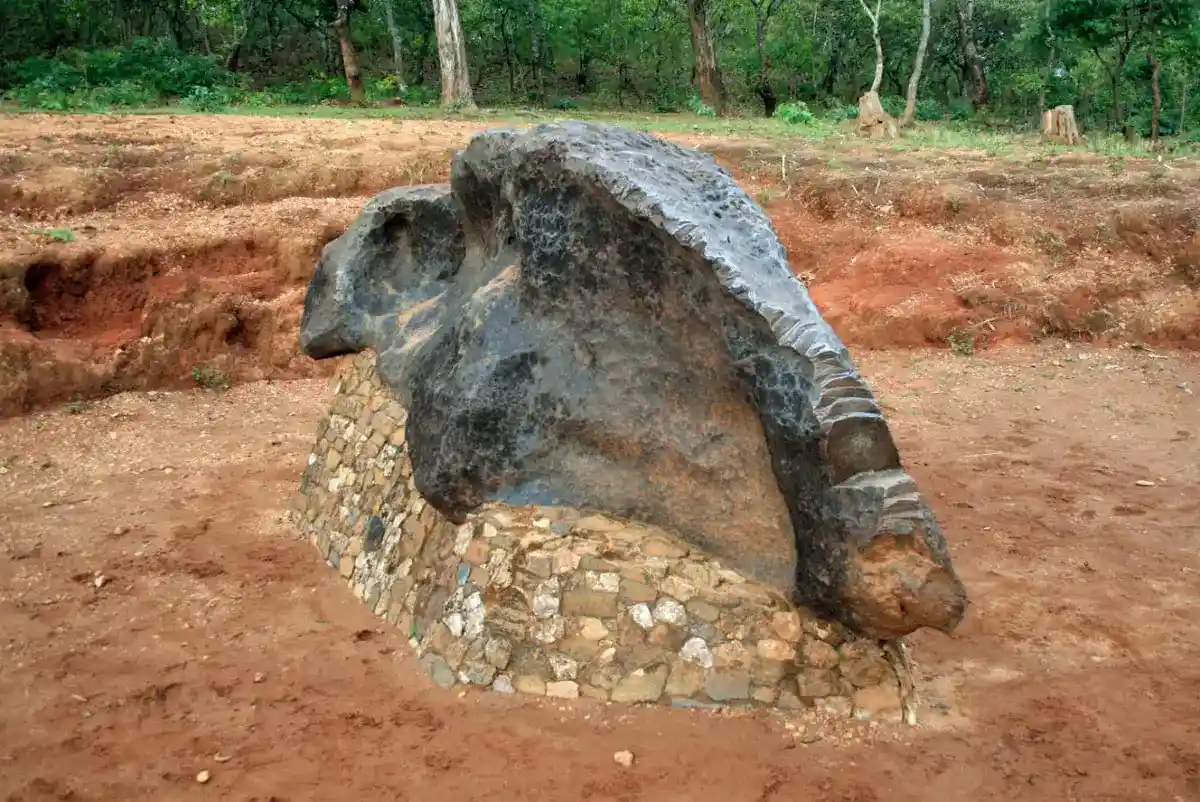
Mbozi meteorite Credit: Christiaan Zeelenberg / Wikimedia Commons
Meteorite Hunting Today: The Highs and Lows
There are many thrills to meteorite hunting.
- You get to travel the world, searching for space rocks.
- You get to hold a piece of truly ancient history, often from the early formation of the solar system in your hands.
- You get to aid in scientific discovery.
- You can potentially make a lot of money, potentially hundreds of thousands of dollars from a single sale.
- Lunar and Martian meteorites are the most expensive with a hundred grams of Mars rock being worth potentially $100,000 (only about 1.400 pounds (650 kg) of lunar meteorites have been found)
- Particularly old or noteworthy meteorites are more valuable such as the Gloucestershire Meteorite of 2021, the first meteorite found in England in 30 years
- Meteorites are sold by the gram so bigger pieces will be more expensive in addition to the fact that they are rarer
- A nearly 120-pound meteorite discovered in Canada was sold to the Royal Ontario Museum in Toronto for reportedly $600,000 in 2010
- Willamette Meteorite: 15.5-ton meteorite (largest in the US and sixth largest in the world) valued in the millions
- In 2018, a rare 70-pound (32kg) Arizona meteorite was sold for $237, 500
- In 2020, a rare 29.7-pound (13.5 kg) lunar meteorite found in the Sahara Desert sold for $2.5 million
- In 2021, a pair of Martian meteorites each sold for $187,500
- A large slice (about 18 pounds/ 8.15 kg) of the Fukang meteorite from China’s Xinjiang Province sold at auction for almost $560,000 in 2021
But while the rewards are high for meteorite hunters, the risk is often high as well. In the past, meteorite hunters had to rely on word of mouth, posting flyers, and following news stories to find fall sites.
Today advanced technology today including NASA satellites, weather radar, the internet and resources such as the Astromaterials Research & Exploration Science Meteorite Falls site which tracks recent meteorite falls with radar and probability models (like NASA planetary scientist Mar Fries’ “Jörmungandr”) to determining strewn field maps that mark the location with the highest probability of finding a meteorite from a fall help. However, it doesn’t mean you will find one.
It’s not uncommon for meteorite hunters to spend thousands of dollars traveling to and then staying in the area of a recent fall to search for days or even weeks and find nothing. Some estimates indicate that as high as 99.5 percent of meteors spotted in the sky burn up in our atmosphere, meaning nothing makes it to the ground as a meteorite.
There are also other meteorite hunters to compete with meaning there’s an almost guaranteed chance that you will find at least one competing team during your trip. While sometimes meteorite hunters can be friendly, it still comes down to business and some take it too far, deliberately misleading other hunters in an attempt to get their haul. If hunting internationally, other concerns can come into play including legality differences and unsafe travel.
One of the bigger meteorite hunters today with billionaire space rock collecting clients, Michael Farmer, was kidnapped, beaten, and nearly killed by Kenyan thieves as well as imprisoned in Oman for illegal mining.
It requires weighing the available information and variables, including time to determine if it is worth taking the gamble, wanting evidence that your expenses will be worth it, but also wanting to get there and find something before the competitors. While the technology and maps help immensely, actually finding a meteorite in the strewn field is still quite difficult, still mainly requiring visual searches and poking anything that looks like a black, charred rock.
When not using technology to find fresh fall sites, hunters still work with local people all around the world, but now with smartphones, email, and social networks. They can negotiate with them to purchase the rock and then attempt to put it in the hands of collectors all around the world. In the past, finding a buyer was harder since there wasn’t a global, connected market.
Now, they sell at major auction houses if you can provide genuine meteorites and know how to negotiate. Otherwise, you have to find and maintain client lists of collectors. Proving that your meteorite is genuine and also determining its worth requires testing, leading many meteorite hunters to partner with academic institutions, donating a certain percentage of their finds in return for testing.
And again, while famous and especially large meteorites like the 15.5-ton Willamette Meteorite (the largest found in the U.S.) are valued in the millions, the competition for these is typically much higher since they are large enough to draw out the best meteorite hunters.
So in summation, meteorite hunting can be summarized as below:
Pros | Cons |
Adventure and Thrill | Rarity of meteorites |
Science and History | High competition |
Potentially immense monetary gain | “Failed” trips resulting in net losses |
Less likely: physical harm and imprisonment in foreign countries |
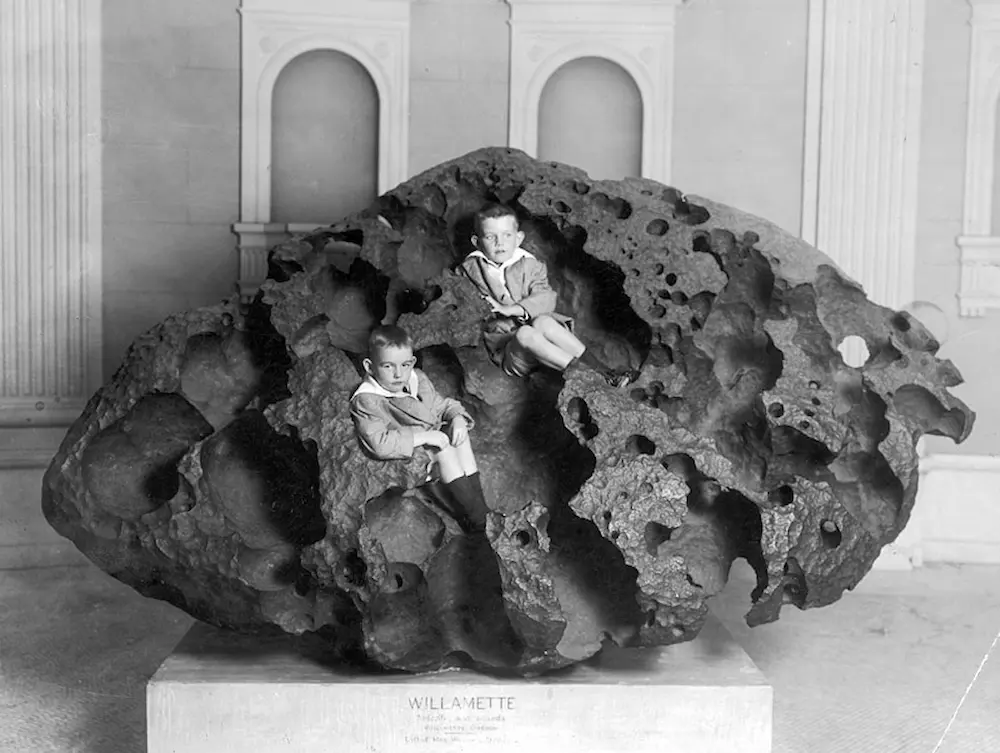
American Museum of Natural History
Ethical and Other Concerns with Meteorite Hunting
As is the case with any flipping business, there are concerns about whether locals, particularly in other, often third-world, countries, are given fair deals when the hunters are able to flip that rock for thousands and even hundreds of thousands of dollars, which is likely a good deal more than what they purchased them for. Yes, it’s a business and the locals likely wouldn’t be able to get in touch with the billionaire collector to get the same deal, but it’s a concern nonetheless.
In addition, even if hunters have a partnership with an academic institution, they likely aren’t donating the best specimens as these typically end up in the hands of private collectors who can pay more.
As is the case with much of space exploration today from private companies, there are many concerns about the overall benefits when the primary people benefitting are the 1 percent. Do unanswered questions about the formation of the solar system and our very existence lie locked away in one of the vaults of billionaires? It’s possible.
Conclusion
Space rocks are very rare and highly sought after, especially by wealthy collectors, providing the opportunity for the fantastical job of meteorite hunting.
The payouts can be immense, up to hundreds of thousands of dollars or even millions, but the risks are also enormous due to the rarity of these objects, the competition, the high risk of finding nothing at an immense cost, and the ability to effectively flip it for a profit.
There are meteorite hunters out there that have made a reputation for themselves and a lucrative business to match it, but the risks are high and often not worth it.

Sarah Hoffschwelle is a freelance writer who covers a combination of topics including astronomy, general science and STEM, self-development, art, and societal commentary. In the past, Sarah worked in educational nonprofits providing free-choice learning experiences for audiences ages 2-99. As a lifelong space nerd, she loves sharing the universe with others through her words. She currently writes on Medium at https://medium.com/@sarah-marie and authors self-help and children’s books.
Learn more about meteorites ☄️
This page is part of our collection of astronomy articles. If you enjoyed the read, then you’ll love the following articles.

